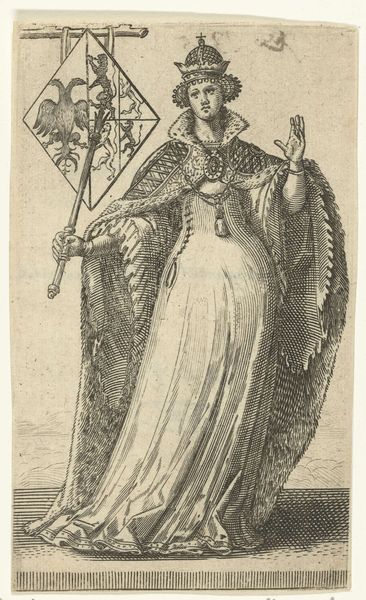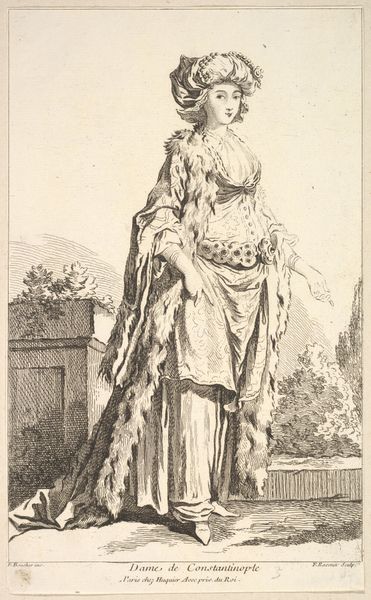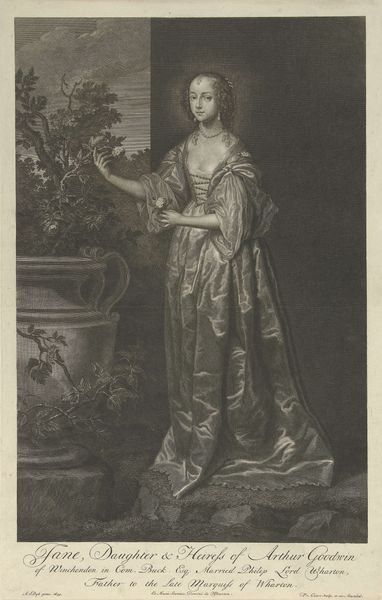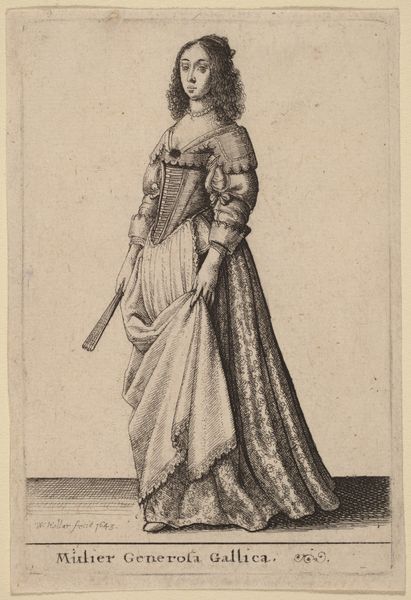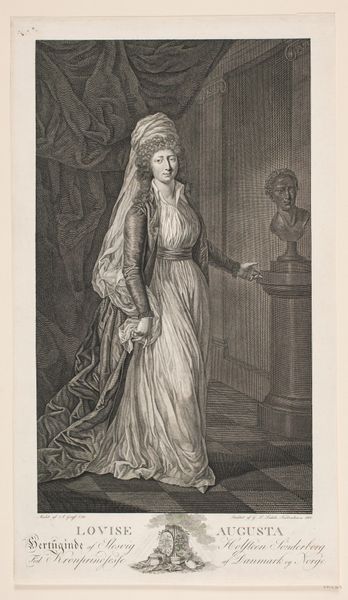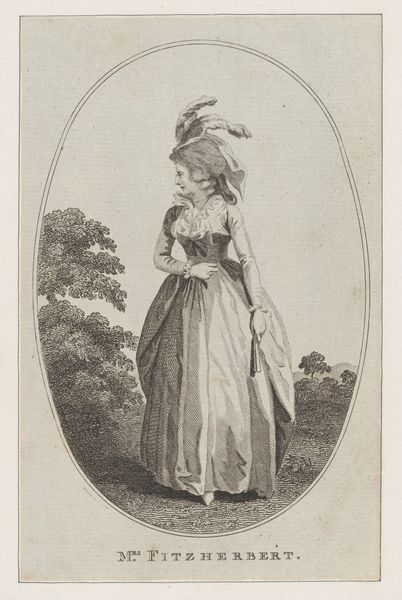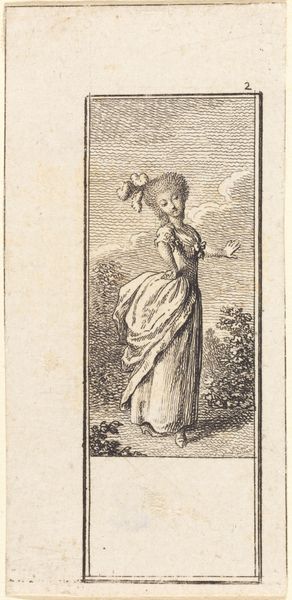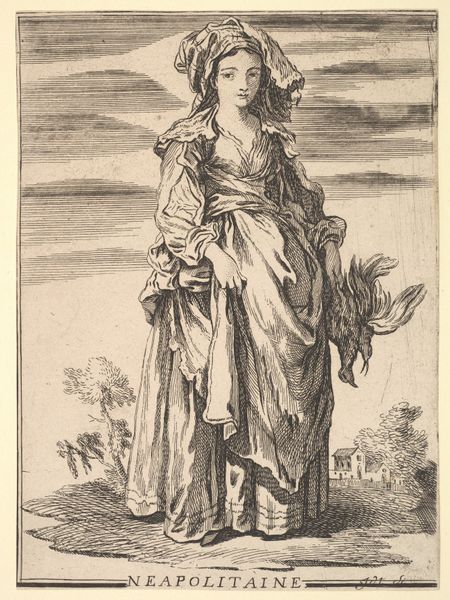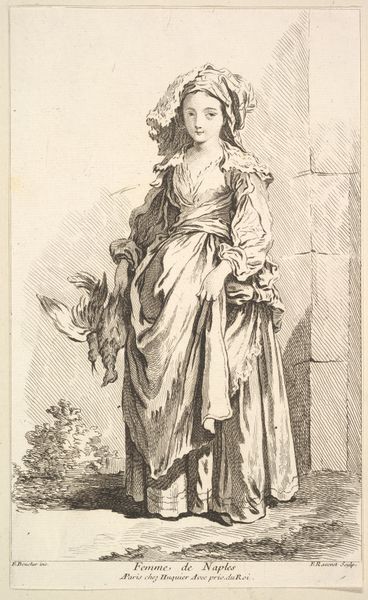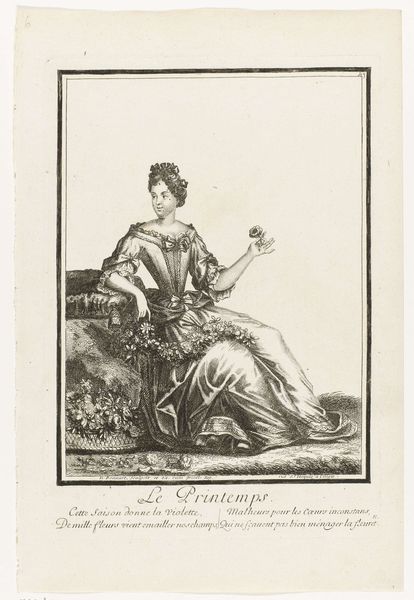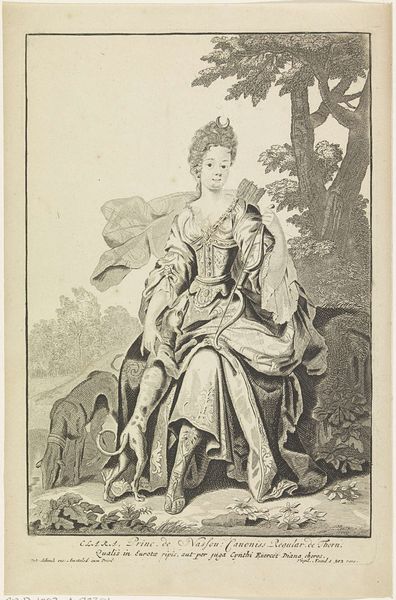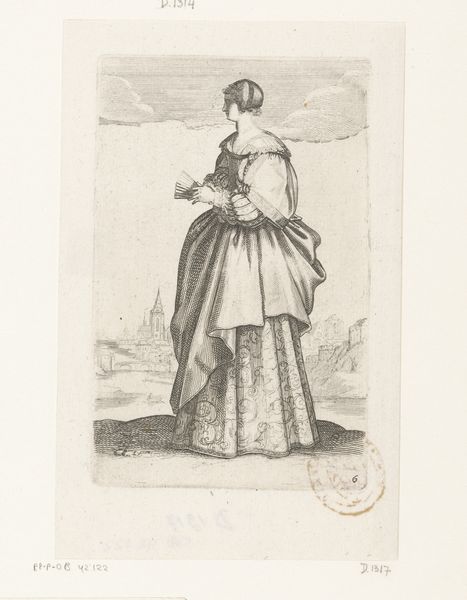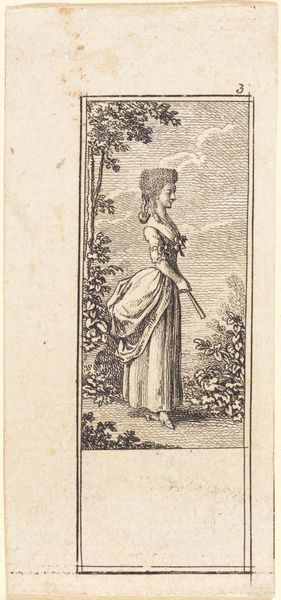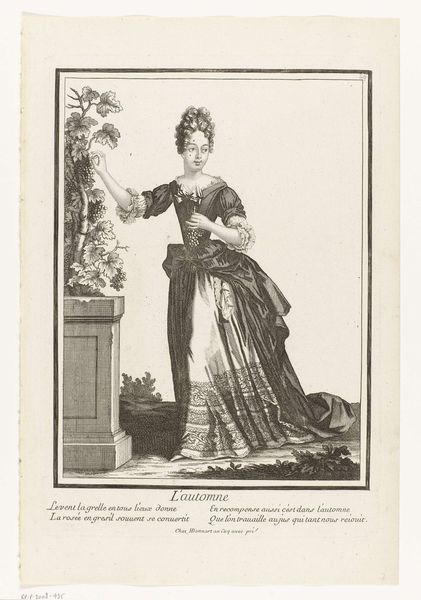
Plate 46: Habit de Folie: a woman in a ballet pose, wearing a bonnet and holding a marotte in her right hand, from 'New designs for costumes' (Nouveaux desseins d'habillements à l'usage des balets operas et comedies) 1716 - 1726
0:00
0:00
drawing, print, etching
#
drawing
#
baroque
# print
#
etching
#
figuration
#
costume
#
genre-painting
Dimensions: image: 5 7/8 x 3 3/8 in. (15 x 8.6 cm)
Copyright: Public Domain
This etching, titled "Habit de Folie," was created by Claude Gillot, around the turn of the 18th century. The printmaking process— likely engraving or etching—is crucial to consider. It allowed Gillot to disseminate his design widely and relatively cheaply. Look closely and you will see a ballet costume design, carefully delineated with precise lines and tonal gradations. The material of the costume, probably silk, is made palpable through the artist’s skilled rendering, but the image also speaks volumes about the labor involved in producing these fashionable items. The costume embodies the height of luxury, yet the design would have relied on the skilled hands of numerous artisans, from weavers and dyers to tailors and embroiderers. Gillot’s print provides us with insight into the world of theatrical design and the economics of early modern fashion. It reminds us of the intricate relationship between art, craft, and commerce during this period. By understanding the materials, making, and context, we gain a richer appreciation of this seemingly simple image.
Comments
No comments
Be the first to comment and join the conversation on the ultimate creative platform.
